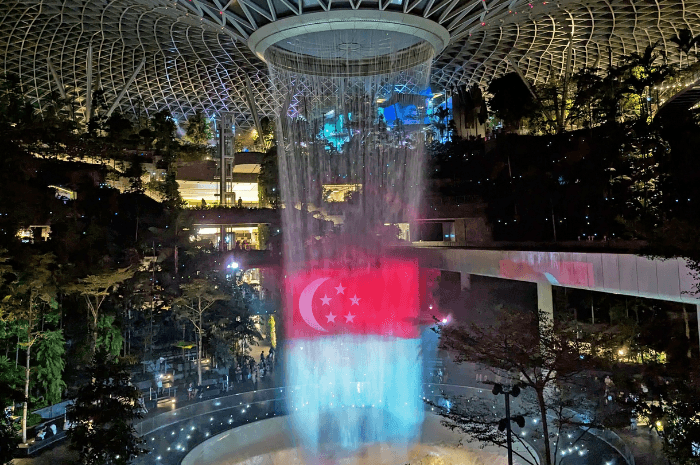Increase shipping capacity
The Federation of Indian Export Organizations (FIEO) has called for “Double Tax Deduction Scheme for Internationalization of MSMEs” to allow MSMEs to deduct against their taxable income, twice the qualifying expenses incurred for approved overseas activities including market preparation, market exploration, market promotion and market presence.
A ceiling of US$200,000 may be put under the Scheme so that the investment and tax deduction are limited, said FIEO Director General Dr Ajay Sahai who raised issues at pre-budget meeting with Finance Minister Nirmala Sitharaman on 17 Dec 2019.
The issues:
Exports Development Fund: The marketing support under Market Access Initiative of the Ministry of Commerce is very small. A scheme of Rs.300 crore is insufficient to support exports of over US$535 billion recorded last year. The current scheme can at best cover 5,000 MSMEs (assuming support of Rs.200,000 for 3 exhibitions in a year) out of over 1.2 lakh active MSMEs in exports. We should create an Export Development Fund with a corpus of 0.5% of country’s exports for helping the MSME Exporters.
Capacity Building in Health Sector: Health sector is one of the fastest growing export services, but still huge mismatch exists between the demand and supply. We require close to 3 million beds to reach the target of 3 beds per 1,000 people by 2025. We require about 1.5 million doctors and 2.5 million nurses to meet the growing demand of the sector. The required capacity building is the need of the hour and so is augmenting investment into the sector. Foreign patients from Africa and Middle East are making beeline at Indian hospitals which can be multiplied with good hospitals in the country.
Focus on Transport Services: India’s outward remittance on account of transport services is increasing year after year. We remitted US$48 billion, $57 billion and $67 billion in 2016, 2017 and 2018, respectively. When we are looking at increasing our international trade to US$2 trillion in an economy of US$5 trillion, the outgo on transport services will increase to US$150-$200 billion. While we need to strengthen Shipping Corporation of India, new large shipping companies may also be set up in India to exploit the ready market available to them.
GST Refund to Foreign Tourists: Refund of GST at the airport, as envisaged under IGST Act, has not yet been operationalised. Such an initiative will not only give fillip to tourism but will also help in exports of handicrafts, non-precious jewellery, carpets, Ayush and herbal products, beauty products etc.
Ease of Investment:
The pro-active measures taken by the Government has resulted in receipt of record FDI of over US$64 billion during the last financial year. However, the share of FDI flowing into manufacturing is less than 1% of GDP. China, over a period, is losing its competitiveness in manufacturing due to high wages, strict environmental laws, relocation of factories from coastal areas to remote location, etc. The tariff war has given further inducement to investors to move away from China. Many of those, who are located in China with focus on US, are exploring the possibility of relocation. India has all the wherewithal to attract such investment with reduction in corporate tax coming as icing on the cake. However, the ease of investment is still lacking.
Government may nominate nodal officer for every investor investing beyond a threshold limit whose job should be to provide all clearances/ approval to the investor from the statutory agencies. Moreover, the actual investment takes place in the State who have to be taken on board to facilitate such investment as regulatory processes in States are still cumbersome.
Tax Deductions on Product Development & R&D:
Section 35(2AB) of Income Tax Act may be relooked into to so as to provide tax deduction not only on R&D but also on product development as product development is key in exports and should be encouraged. The tax deduction on R&D expenditure which has come down from 200% to 100% now may be restored to its original position as R&D investment in India is extremely low (1% of GDP) and most of the R&D is being done at the behest of the Government or in sectors like pharma where it is Hobson’s choice.
Propelling Industrial Production:
One of the reasons for fluctuations in India’s export performance has been the lack of consistency in industrial or manufacturing growth. We see some growth in manufacturing for a month or so and then we see a dip. Manufacturing needs to be made competitive by addressing the issue of cost of capital, land, labour, logistics cost, etc.
Instead of merging few small units into large-one, one can explore the possibility of value chain production wherein some of the units make parts and components, some make the final product, and some make accessories for the same product. Such manufacturing should be preferred in a close geographical area so that the supply chain is integrated with minimal logistics cost.
Inland Freight Scheme for Land Locked State:
One of the challenges faced by Indian exports is less exports from landlocked States due to high logistics cost. The situation becomes further worse where the unit in a landlocked State is dependent on imported material as it increases the freight cost both ways. Government should look at providing inland freight subsidy to exporters of such States so as to make them more competitive. The cost of subsidy may be shared 50:50 between Centre and the State.
Reduction in Income Tax for non-corporate bodies
The industry has welcomed reduction in corporate tax to 15% for new investors and 25% to existing investors. However, this has created wide-spread disparity with non-corporate MSME who are subject to higher taxation of 35%. To encourage MSME units to further expand and create new opportunities, proprietorship firms/partnership firms and LLPs both new and old may also be given the benefit of reduced income tax so as to bring them at par with corporate bodies. fiinews.com











